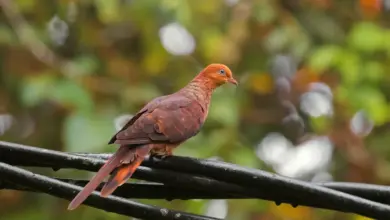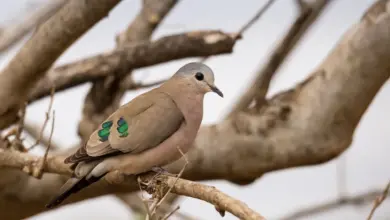Shining-Green Hummingbirds
Hummingbird Information
The Shining-Green Hummingbirds (Lepidopyga goudoti) – also known as Goudot’s Hummingbird or Luminous Hummingbird – is a South American hummingbird species that occurs naturally in Colombia and Venezuela.
They inhabit subtropical or tropical dry forests, shrubland, and heavily degraded former forests.
Alternate (Global) Names
Czech: Kolibrík zárivý, kolib?ík zá?ivý … Danish: Glansgrøn Kolibri … Dutch: Goudotkolibrie, Goudots Kolibrie … German: Goudot Kolibri, Goudotkolibri, Goudot-Kolibri, Grünkolibri … English: , Shining Green Hummingbird, Shining-green Hummingbirds … Finnish: Hohtoruohokolibri … French: Colibri de Goudot … Italian: Colibrì verde, Colibrì verde splendente … Japanese: midorirurinodohachidori … Norwegian: Grønnglanskolibri … Polish: milek zielony, mi?ek zielony … Russian: ??????? ?????????? … Slovak: kolibrík lesklozelený … Spanish: Colibrí de Goudot, Tucusito de Pico Curvo … Swedish: Grönglanskolibri
Subspecies and Distribution:
-
- Lepidopyga goudoti goudoti (Bourcier, 1843)
- Range: Middle and upper Magdalena Valley in central Colombia
- Lepidopyga goudoti goudoti (Bourcier, 1843)
-
- Luminous Hummingbird (Lepidopyga goudoti luminosa – Lawrence, 1862)
- Range: Coastal lowlands of northern Colombia.
- Luminous Hummingbird (Lepidopyga goudoti luminosa – Lawrence, 1862)
-
- Lepidopyga goudoti zuliae (Cory, 1918)
- Range: Northern and western parts of the lower Maracaibo basin in extreme northeastern Colombia and northwestern Venezuela
- Lepidopyga goudoti zuliae (Cory, 1918)
- Lepidopyga goudoti phaeochroa (Todd, 1942)
- Range: Southern and eastern parts of the lower Maracaibo basin in northwestern Venezuela
Description
The plumage is mostly iridescent green with dusky wings and tail. It has white leg puffs. Its bill is long and slightly down-curved.
Nesting / Breeding
Hummingbirds are solitary in all aspects of life other than breeding, and the male’s only involvement in the reproductive process is the actual mating with the female. They neither live nor migrate in flocks, and there is no pair bond for this species. Males court females by flying in a U-shaped pattern in front of them. He will separate from the female immediately after copulation. One male may mate with several females. In all likelihood, the female will also mate with several males. The males do not participate in choosing the nest location, building the nest, or raising the chicks.
The female is responsible for building the cup-shaped nest out of plant fibers woven together and green moss on the outside for camouflage in a protected location in a shrub, bush, or tree about 2 – 7 m (6.5 – 23 feet) above the ground. She lines the nest with soft plant fibers, animal hair, and feathers down, and strengthens the structure with spider webbing and other sticky material, giving it an elastic quality to allow it to stretch to double its size as the chicks grow and need more room. The nest is typically found on a low, thin horizontal branch.
The average clutch consists of 2 white eggs. The female alone is responsible for incubating the eggs and raising the young. The young are born blind, immobile, and without any down.
The female protects and feeds the chicks with regurgitated food – a large part of which is partially digested insects since nectar is an insufficient source of protein for the developing young. The female pushes the food down the chicks’ throats with her long bill directly into their stomachs.
As is the case with other hummingbird species, the young are brooded only the first week or two and are left alone even on cooler nights after about 12 days – probably due to the small nest size. The juveniles leave the nest when they are about 20 days old.
Diet / Feeding
They primarily feed on nectar taken from a variety of brightly colored, scented small flowers of trees, herbs, shrubs, and epiphytes. They favor flowers with the highest sugar content (often red-colored and tubular-shaped) and seek out, and aggressively protect, those areas containing flowers with high-energy nectar. They use their long, extendible, straw-like tongues to retrieve the nectar while hovering with their tails cocked upward as they are licking at the nectar up to 13 times per second. Sometimes they may be seen hanging on the flower while feeding.
Many native and cultivated plants on whose flowers these birds feed heavily rely on them for pollination. The mostly tubular-shaped flowers exclude most bees and butterflies from feeding on them and, subsequently, from pollinating the plants.
When flowering plants are not readily available (for example during the winter), these hummingbirds may take advantage of local hummingbird feeders for some sugar water. They also drink out of bird baths or water fountains where they will either hover or sip water as it runs over the edge. They will perch on the edge and drink – like all the other birds; however, they only remain still for short moments.
These birds also feed on small spiders and insects, which present important sources of protein particularly needed during the breeding season to ensure the proper development of their young. Insects are often caught in flight (hawking); snatched off leaves or branches, or taken from spider webs. A nesting female can capture up to 2,000 insects a day.
Males establish feeding territories, where they aggressively chase away other males as well as large insects, including hawk moths and bumblebees, that want to feed in their territory. They use aerial flights and intimidating displays to defend their territories.
Metabolism and Survival and Flight Adaptions – Amazing Facts
Species Research by Sibylle Johnson
Please Note: The articles or images on this page are the sole property of the authors or photographers. Please contact them directly with respect to any copyright or licensing questions. Thank you.






